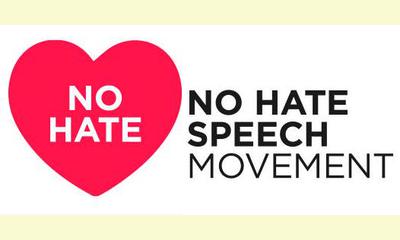|
|
Building competences to fight hate speech online
un articulo por Ana Afonso
Video: no hate speech
In the framework of the No
Hate Speech Movement initiated last year by
the Council of Europe, CEIPES organised last
September in Palermo, Italy, a training course
with young people from different European
countries aimed to raise awareness and build
competences to fight hate speech online. The
course has received the financial support of the
European Youth Foundation of the Council of
Europe.

click on photo to enlarge
But what is hate speech online? And why it is so
important nowadays?
Hate speech online has been defined in the same
way as hate speech with the only difference that
it manifests online. For instance it can take the
form of hate sites, videos with hateful words,
social network pages against groups and people
with certain characteristics, and all other
available possibilities in the online world. One
of the most relevant definitions of hate speech is
the one by the Council of Europe Recommendation on
hate speech adopted by the Committee of Ministers
(1997):
"shall be understood as covering all forms of
expression which spread, incite, promote or
justify racial hatred, xenophobia, anti-Semitism
or other forms of hatred based on intolerance,
including: intolerance expressed by aggressive
nationalism and ethnocentrism, discrimination and
hostility against minorities, migrants and people
of immigrant origin."
The training in Palermo addressed many themes
related to hate speech online. One of the most
successful was the workshop on hate speech in the
media aimed to raise awareness about the role of
propaganda in hate speech discourse. The added
value of this working session was the use of arts
to express feelings, concerns and thoughts about
hate speech and its main consequences. Moreover
the use of a non-verbal method enhanced
participants¹ expression of dreams for a better
future nurturing this way a sense of empowerment
and hope.
Likewise, also the simulation of a hearing of the
European Human Rights Court revealed very
insightful to the group. The simulation was based
on one of the cases described in the Manual on
hate speech developed by the Council of Europe.
Throughout the training many questions were raised
and are still under discussion: What are the
limits of free speech? Who set these limits? What
about the laws against hate speech, which may be
used to create censure against political
opposition or activists?
Indeed, the main work being done so far in the
framework of the No Hate Speech Movement Campaign
has an educational dimension. Education is, up to
now, the best and more efficient solution to work
against hate speech online as it offers the
possibility to raise awareness and to build
competences to identify and respond to hate
speech. To know more about the training outcomes
you may visit our webpage.
|








|
DISCUSSION
Pregunta(s) relacionada(s) al artículo :
Where do stereotypes come from?, And how can we overcome them?
* * * * *
Comentario más reciente:
:
This discussion question applies to the following articles:
The danger of the single story
El peligro de una solo historia
Building competences to fight hate speech online

|
|









